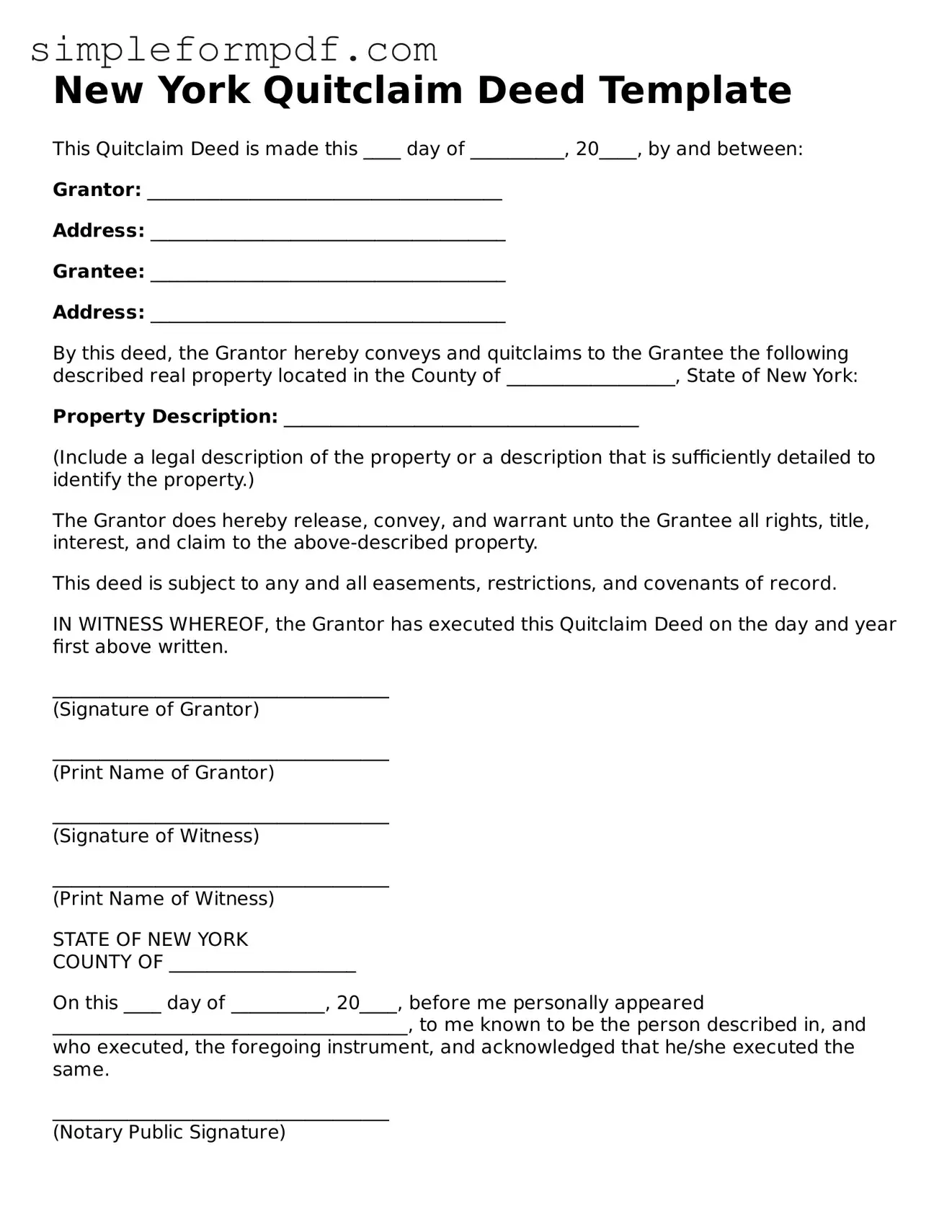New York Quitclaim Deed Template
This Quitclaim Deed is made this ____ day of __________, 20____, by and between:
Grantor: ______________________________________
Address: ______________________________________
Grantee: ______________________________________
Address: ______________________________________
By this deed, the Grantor hereby conveys and quitclaims to the Grantee the following described real property located in the County of __________________, State of New York:
Property Description: ______________________________________
(Include a legal description of the property or a description that is sufficiently detailed to identify the property.)
The Grantor does hereby release, convey, and warrant unto the Grantee all rights, title, interest, and claim to the above-described property.
This deed is subject to any and all easements, restrictions, and covenants of record.
IN WITNESS WHEREOF, the Grantor has executed this Quitclaim Deed on the day and year first above written.
____________________________________
(Signature of Grantor)
____________________________________
(Print Name of Grantor)
____________________________________
(Signature of Witness)
____________________________________
(Print Name of Witness)
STATE OF NEW YORK
COUNTY OF ____________________
On this ____ day of __________, 20____, before me personally appeared ______________________________________, to me known to be the person described in, and who executed, the foregoing instrument, and acknowledged that he/she executed the same.
____________________________________
(Notary Public Signature)
____________________________________
(Print Name of Notary)
